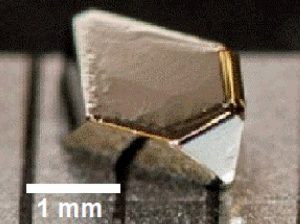Researchers at the University of Minnesota in the US have electrically transformed iron sulfide, also known as “fool’s gold” or pyrite, into a magnetic material.
In a paper published in the journal Science Advances, the scientists explain that this is the first time an entirely non-magnetic material has been transformed into a magnetic one. In their view, this could be the first step in creating valuable new magnetic materials for more energy-efficient computer memory devices.

For over a decade, the team had been studying iron sulfide to try to figure out the fundamental roadblocks to cheap, non-toxic solar cells. At the same time, they were working on the emerging field of magnetoionics where they tried to use electrical voltages to control the magnetic properties of materials for potential applications in magnetic data storage devices.
“At some point, we realized we should be combining these two research directions, and it paid off,” Chris Leighton, the lead researcher on the study, said in a media statement.
Using a technique called electrolyte gating, Leighton and his colleagues took the non-magnetic iron sulfide material and put it in a device in contact with an ionic solution, or electrolyte, comparable to Gatorade. They then applied as little as 1 volt, moved positively charged molecules to the interface between the electrolyte and the iron sulfide, and induced magnetism. They were able to turn off the voltage and return the material to its non-magnetic state, meaning that they can reversibly switch the magnetism on and off.
“We were pretty surprised it worked,” Leighton said. “By applying the voltage, we essentially pour electrons into the material. It turns out that if you get high enough concentrations of electrons, the material wants to spontaneously become ferromagnetic, which we were able to understand with theory. This has lots of potential. Having done it with iron sulfide, we guess we can do it with other materials as well.”
Besides these tests, the scientists want to demonstrate potential applications in real devices and continue research to replicate the process at higher temperatures, which the team’s preliminary data suggest should be possible.
